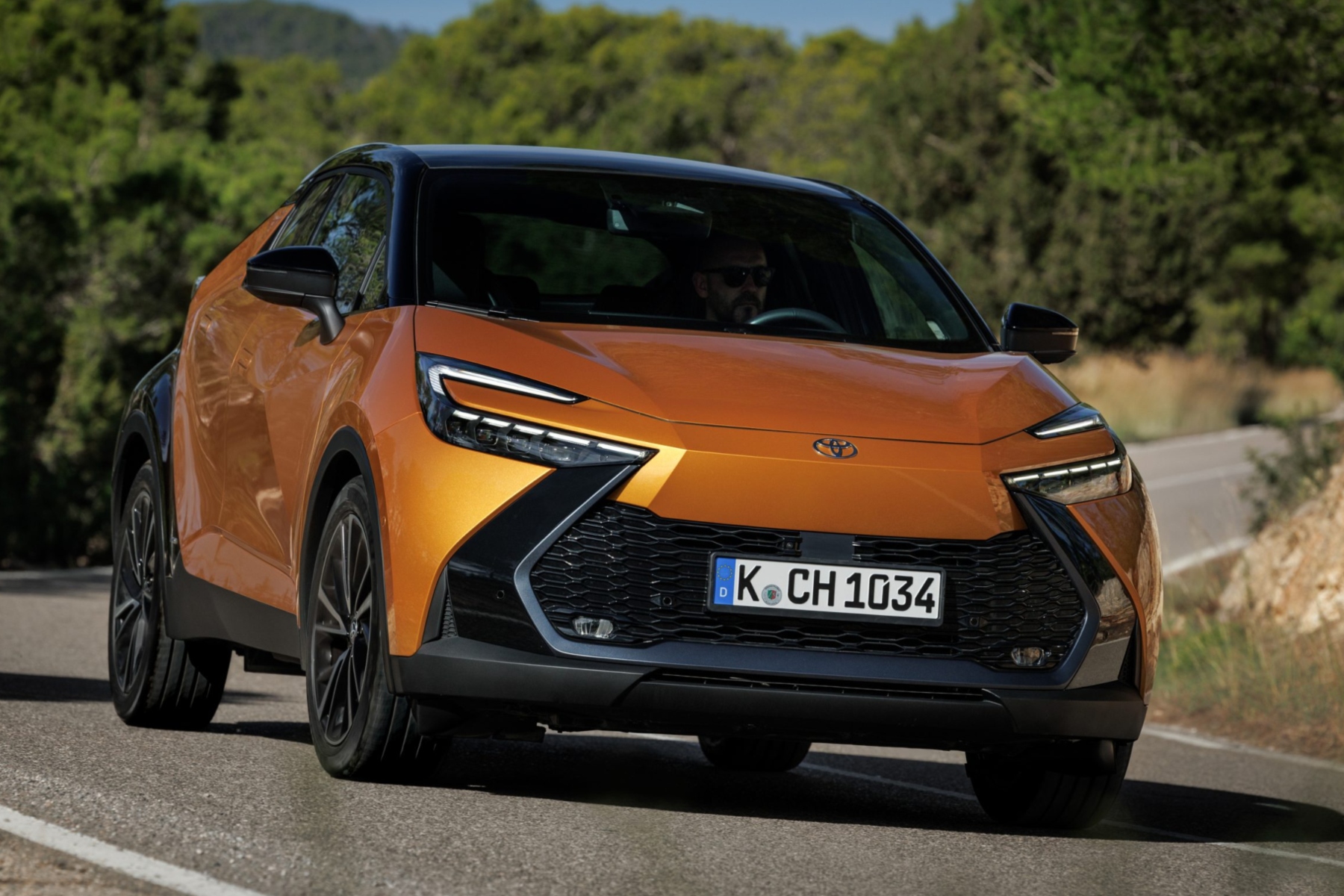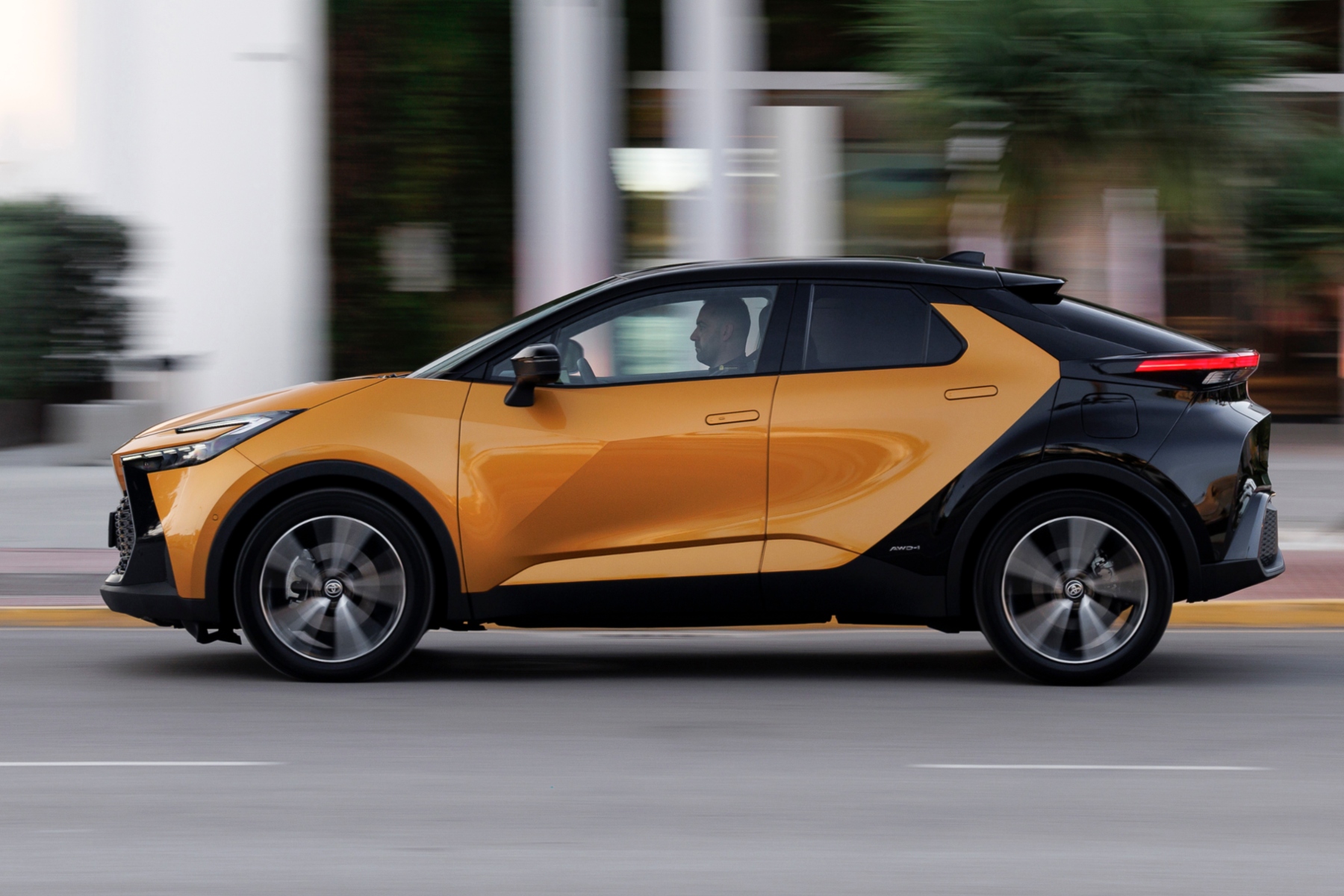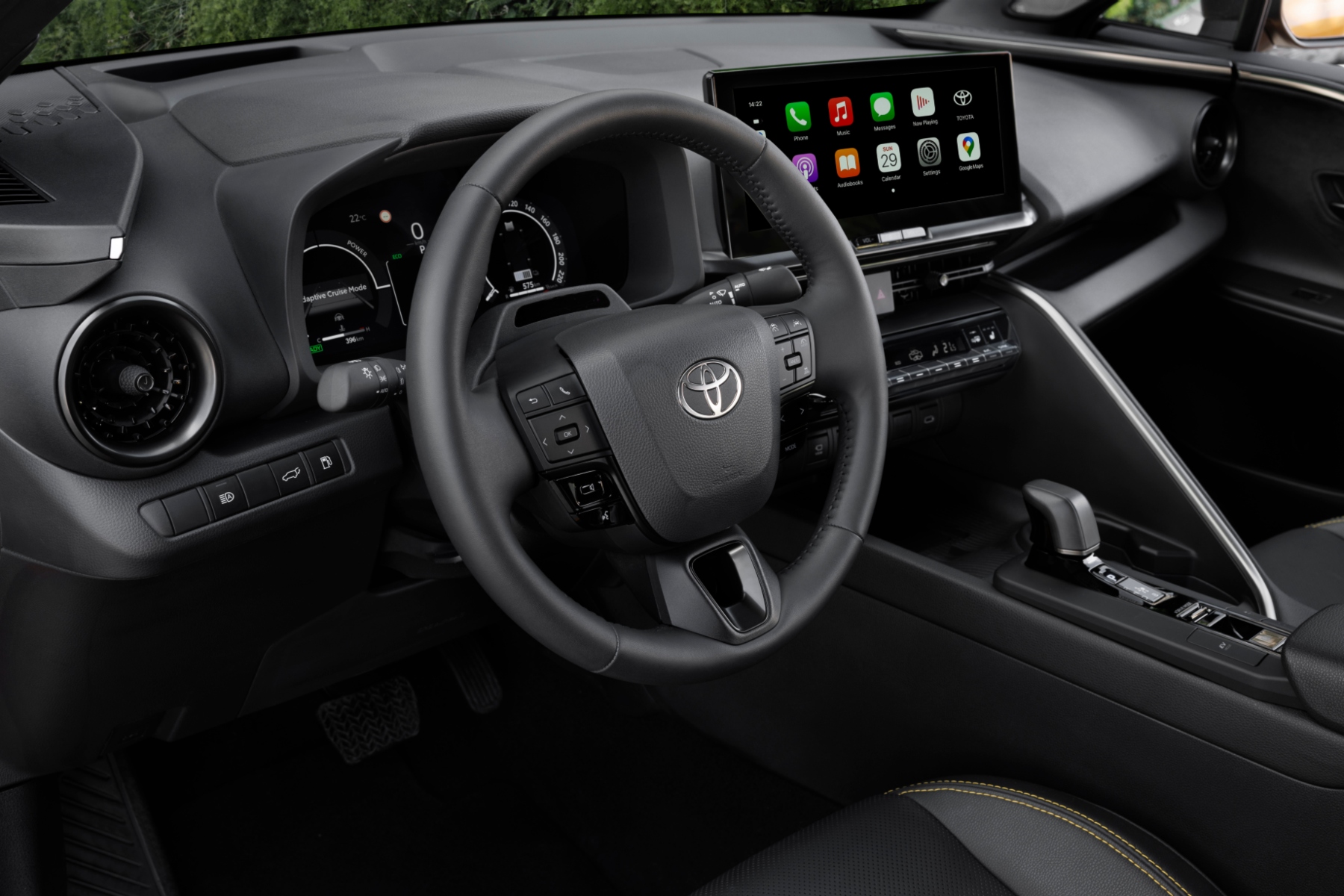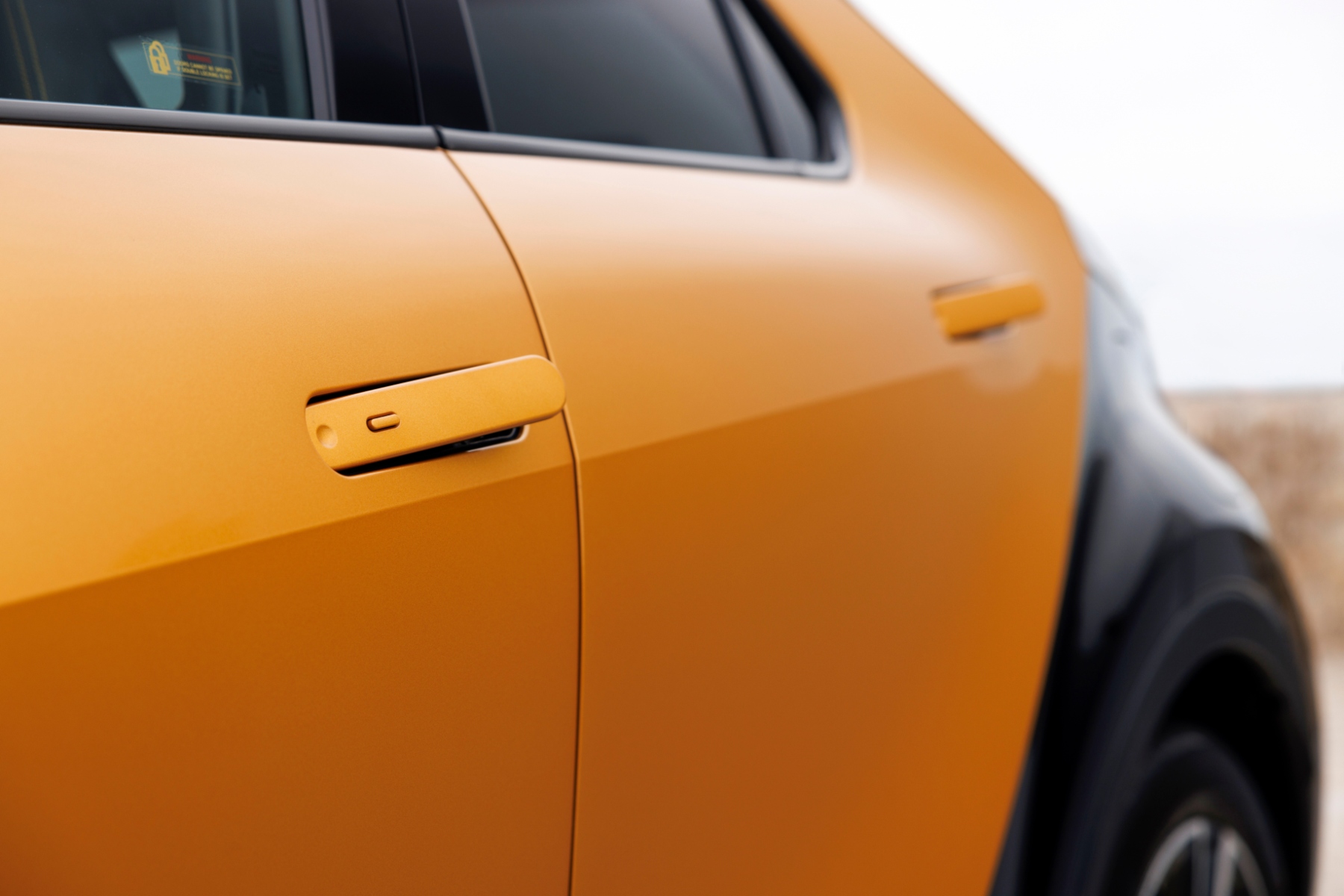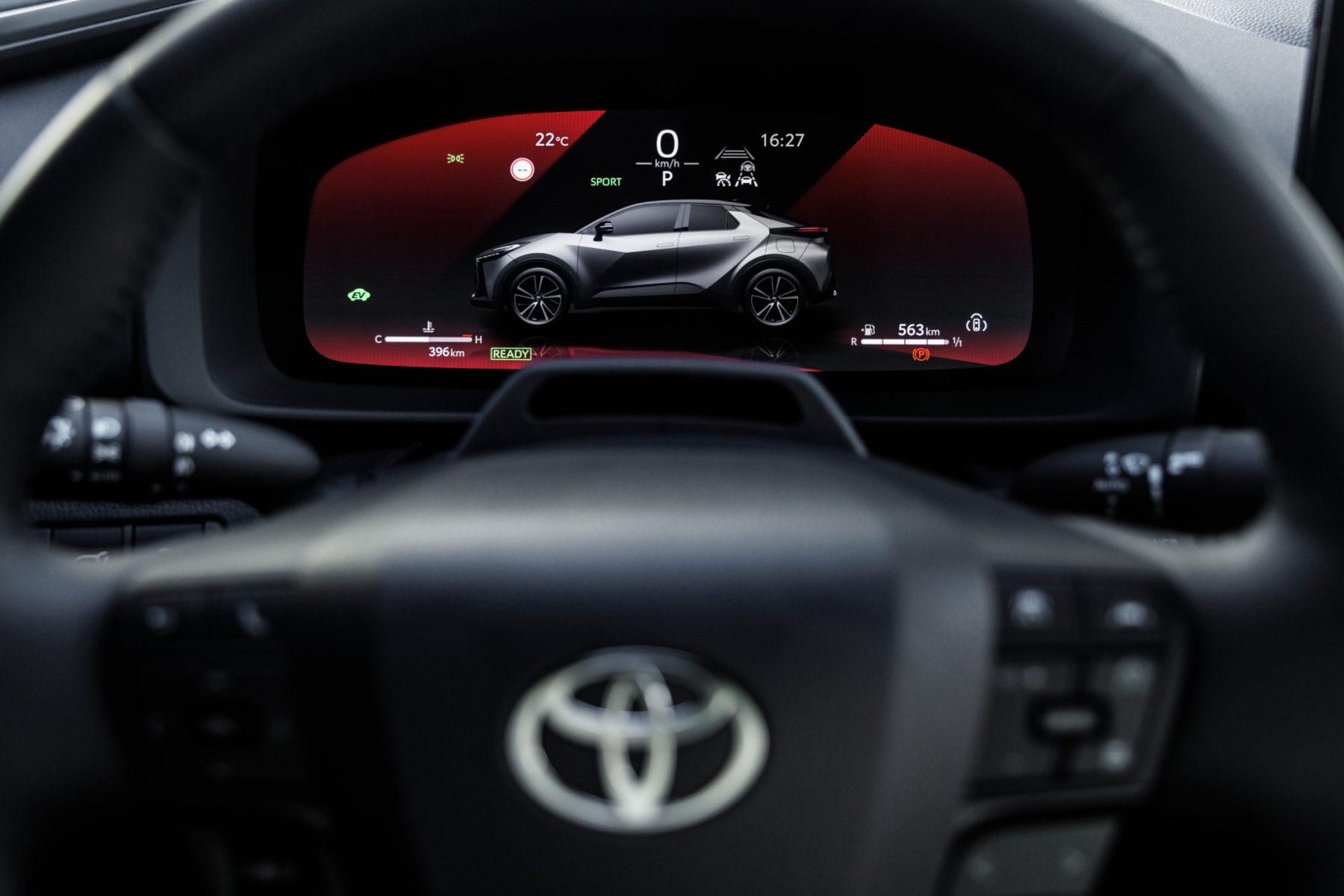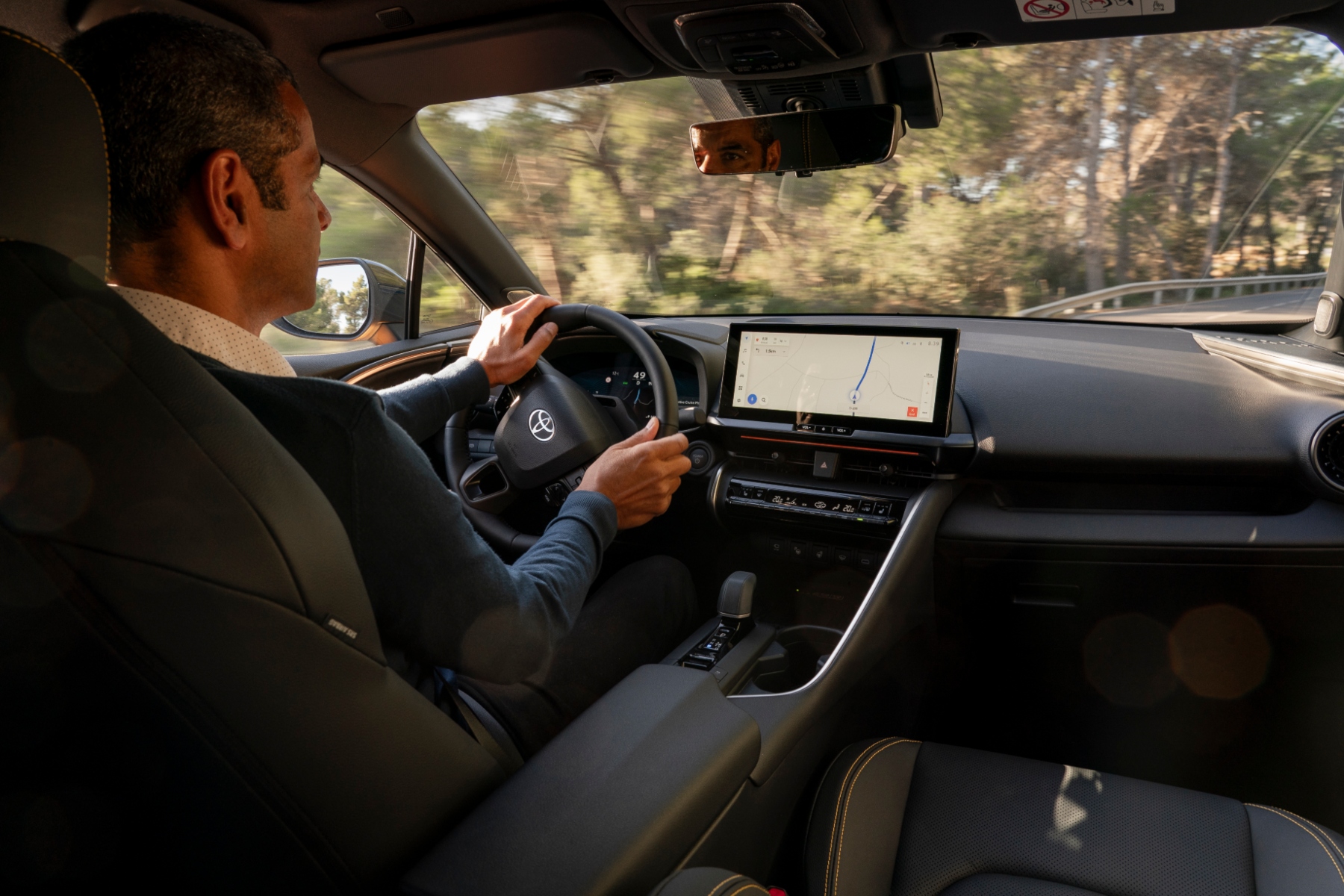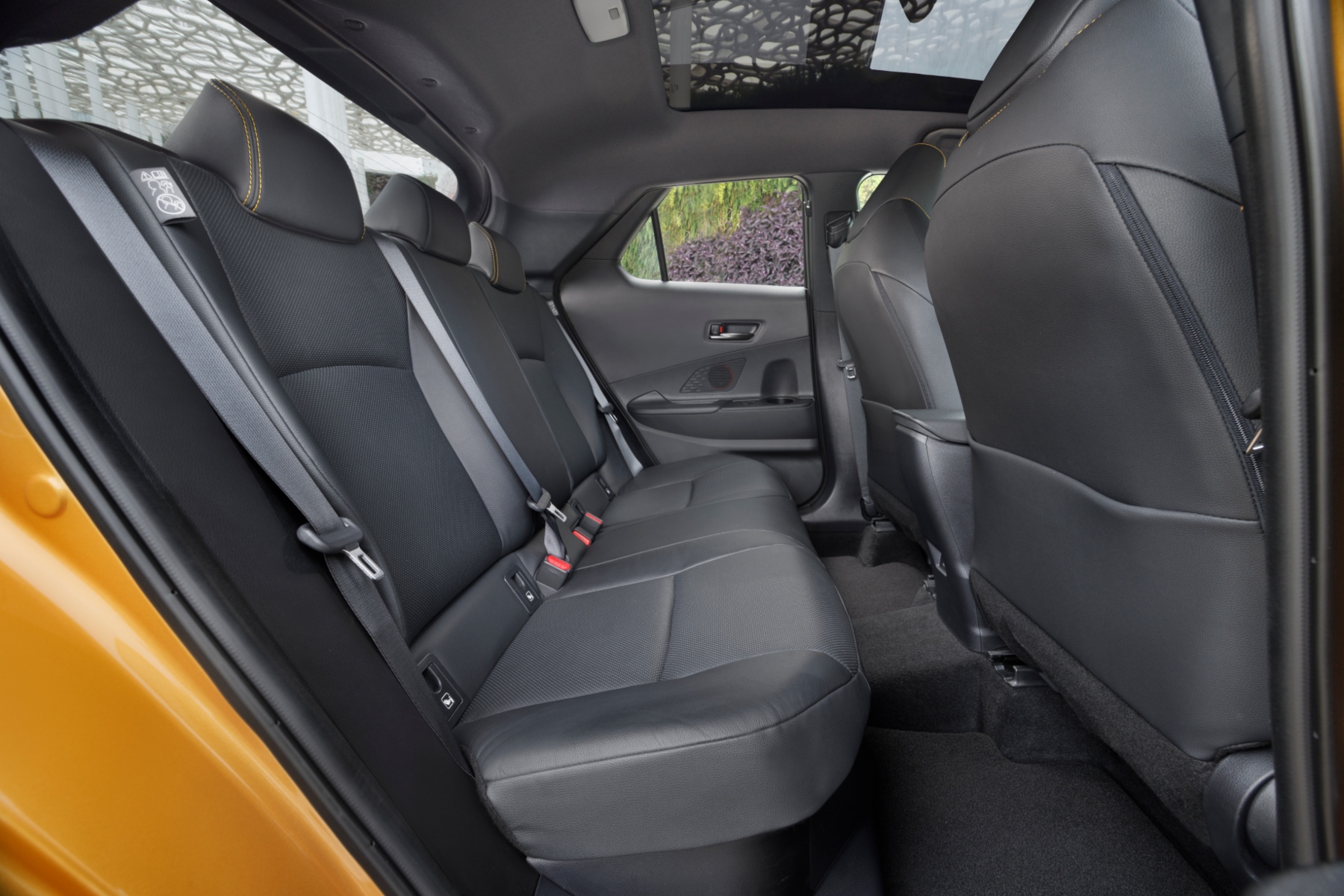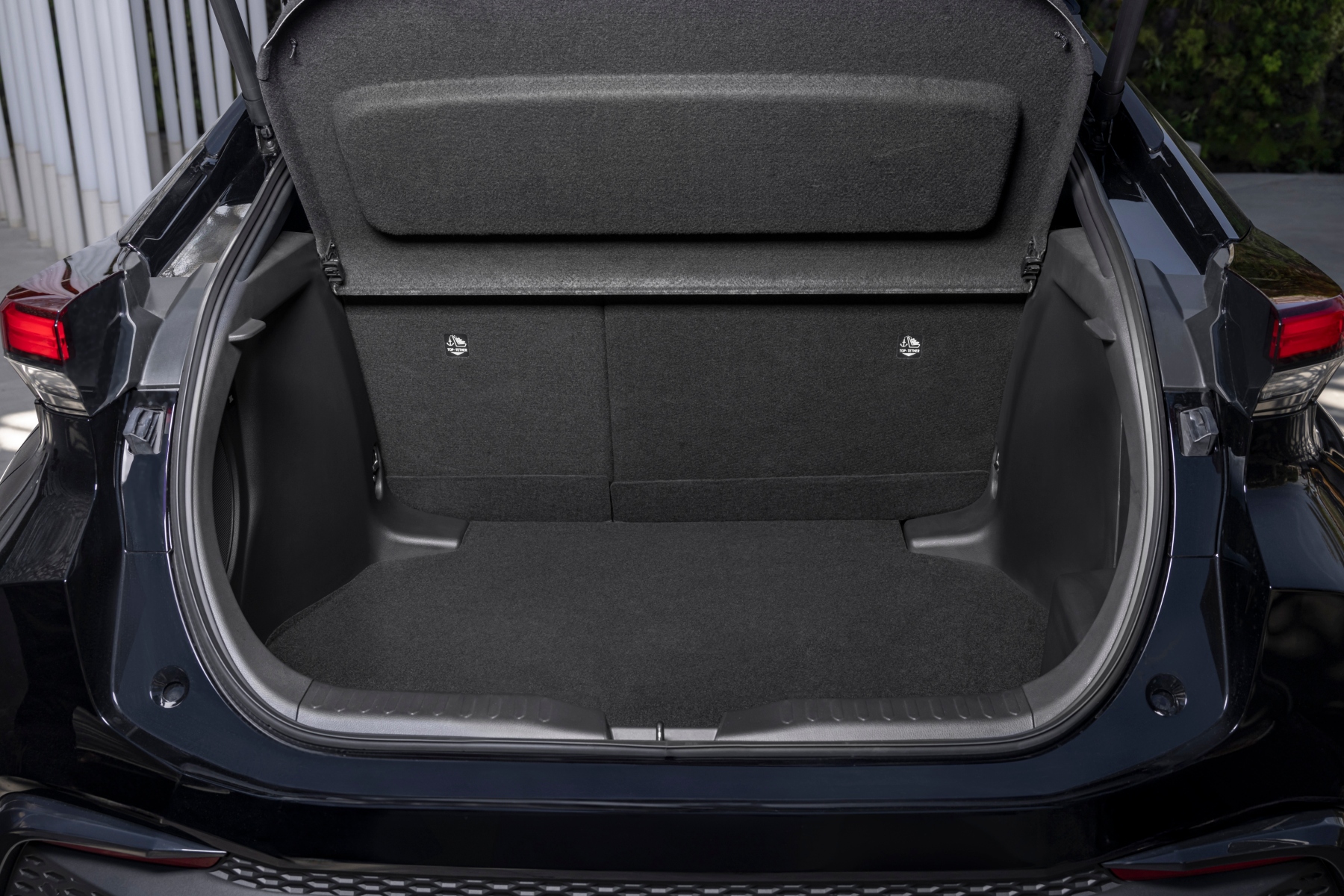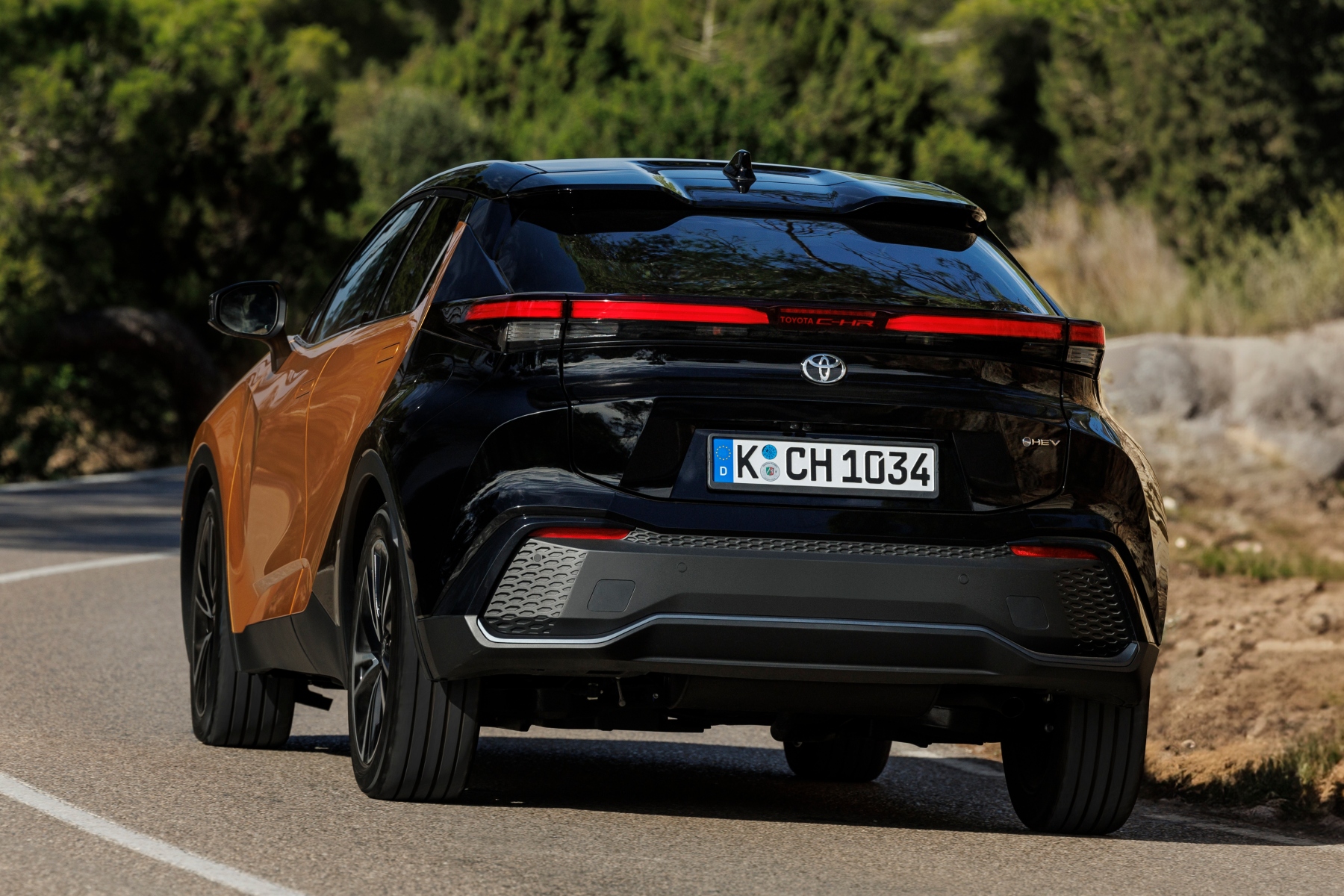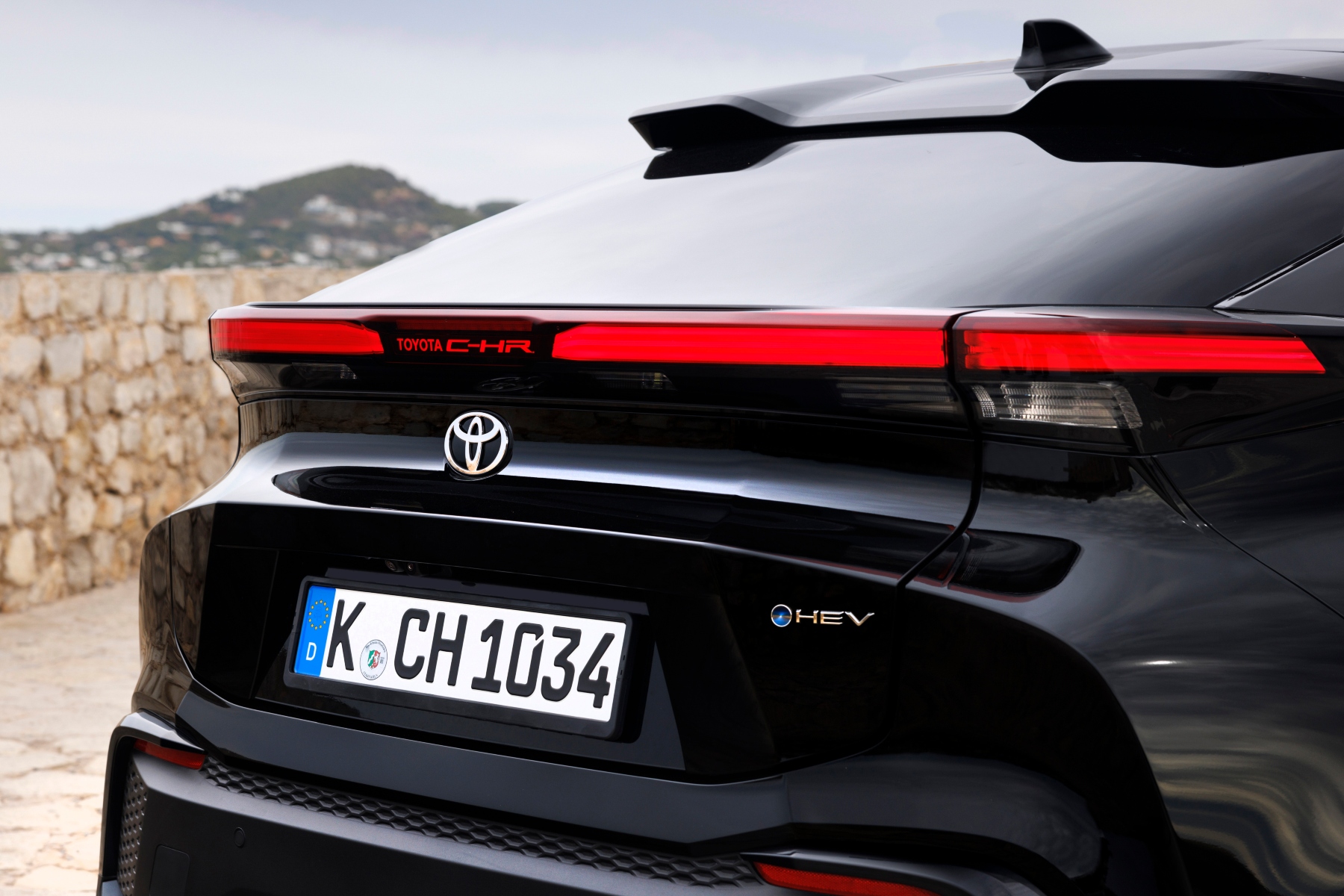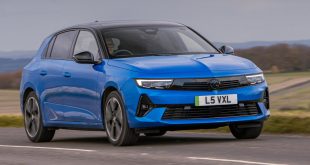We drive the latest version of Toyota’s popular C-HR family crossover – and it’s a big, bold step-up…
If a car could be judged purely on its styling, the second-generation Toyota C-HR would be best-in-class.
And when you consider that its biggest rivals include the Nissan Qashqai, Kia Sportage, Skoda Karoq, Seat Ateca and Hyundai Tucson, that’s no mean feat.
But before we weigh up the new C-HR’s pros and cons, let’s go back to 2017 when the first generation ‘Coupe-High Rider’ was launched in the UK.
With its radical looks, it was something of a departure for Toyota which was still selling the conservative Auris and Avensis at the time.
The funky C-HR was a chunky crossover with a low-slung roofline like a coupe. Distinctively styled with a big roof spoiler and sloping rear window, it was well-equipped, but it also wasn’t without its issues.
Fast forward to 2023 and the all-new Toyota C-HR is a looker. A more grown-up version of the outgoing model, it boasts a wider stance and the original’s curves have been replaced by sharper lines and solid surfacing.
Once again there’s a heavily raked tailgate, though this time it features a dual-element rear spoiler and a full-width LED light bar below with an illuminated ‘C-HR’.
At the front, it features the new ‘hammerhead’ face of Toyota SUVs, while the ‘hidden’ raised rear door handles are no more (they’ve been replaced by retractable ones, front and rear). Overall build quality, interior materials and technology have also been upgraded.
Priced from £31,290, the new model launches initially with 1.8 and 2.0-litre engines paired with Toyota’s latest fifth-generation full hybrid technology that ups both power and efficiency. A 2.0-litre plug-in hybrid will arrive in 2024.
The 1.8-litre delivers 138bhp and the 2.0-litre ups power to 194bhp. Official figures put fuel economy at 60.1mpg and 57.6mpg respectively, while CO2 emissions are from 105g/km and 110g/km.
Both engines are front-wheel drive (there’s no AWD option) and a 2.0-litre plug-in hybrid (with an EV range of up to 41 miles) will join the C-HR line-up in 2024.
First impressions count, and the second-gen Toyota C-HR certainly oozes kerb appeal, especially if you choose a two-tone paint-job.
In terms of size, its dimensions are almost identical to the Suzuki S-Cross, which makes it a tad smaller than its main competitors (including the Nissan Qashqai), but bigger than the class below (eg Nissan Juke).
The driving position is on the high side for me, but you soon get used to it because it’s comfortable with a decent amount of support.
There are roomier cabins, not just because the C-HR isn’t as wide as some rivals, but the driver focused set-up with high centre console makes it snug, especially on the passenger side.
The good news is that the 12.3-inch infotainment touchscreen (on all but entry trims) combined with the driver’s digital display looks the part and works well enough. And mercifully, the C-HR has some physical controls for essentials such as air-conditioning – unlike some new cars.
There’s reasonable space for passengers at the back, while the cabin as a whole has a classier feel, with more soft-touch surfaces.
Toyota’s also ticked the sustainability box because the seat fabrics are made from recycled plastic bottles and there’s animal-free ‘leather’ on the steering wheel.
Load capacity varies between the two engines – 388 litres (1.8) and 364 litres for the 2.0. Again, not class-leading, but adequate. All models come with 60/40 split-folding rear seats.
Visibility is good ahead, but slightly more challenging behind thanks to those chunky rear pillars and small rear windows. Thankfully, all versions have a reversing camera.
The C-HR has a fairly supple suspension and it handles lumps and bumps well. So, it’s one of the more comfortable SUVs on the market.
Light steering suits its natural urban habitat well, but the C-HR is also a pleasant cruiser. It would be an exaggeration to call it dynamic on twistier roads, but there are good levels of body control and decent grip.
We tested both engines (not the GR Sport grade), and both balance performance with economy, delivering 10.2sec and 8.1sec respectively for the 0-62mph sprint.
The issue with both is that there’s a CVT automatic gearbox which causes the revs to rise and stay high until you’ve reached your desired speed. The din in the cabin soon settles down, but it puts you off driving anything but smoothly.
Interestingly, the more powerful 2.0-litre hybrid engine is a little more refined, so manages to iron out the worst of the CVT better.
The C-HR slips between electric and engine modes seamlessly, and can be driven along for short distances using the electric motor alone, so all in all, the claimed economy figures are very achievable.
Finally, it’s always worth remembering that the C-HR comes with a three-year warranty that extends up to 10 years/100,000 miles so long as your car is serviced annually at an authorised Toyota workshop.
Verdict: The cool new Toyota C-HR is a real step-up from the first-generation model. Easy to drive, economical, well equipped and classy, it certainly stands out from the crowd.
 Automotive Blog Automotive Blog brings you the latest news, car reviews and information on the automotive industry.
Automotive Blog Automotive Blog brings you the latest news, car reviews and information on the automotive industry.
